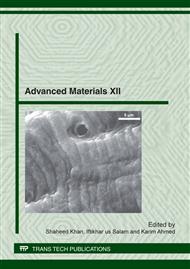p.554
p.560
p.569
p.577
p.585
p.591
p.597
p.602
p.609
Use of Flexible Engineered Cementitious Composite in Buildings
Abstract:
This article describes the applications and benefits of a recently developed smart building material namely Engineered cementitious composite (ECC), also known as flexible or bendable concrete. Conventional concretes have a strain capacity of only 0.1 percent and are highly brittle and rigid. This lack of bendability is a major cause of failure under strain and has been a pushing factor in the development of an elegant material which is capable to exhibit an enhanced flexibility. An ECC has a strain capacity of more than 3 percent and thus acts more like a ductile metal rather than like a brittle glass. The aim of this paper is to highlight a probable success of ECC in terms of industrial and commercial use in Pakistan. With the introduction of flexible concrete in building technology, it is likely to have safer and more durable construction. The material is expected to display reduced detrimental impacts on the natural environment. A bendable concrete is composed of all the ingredients of a traditional concrete minus coarse aggregates or crushed stones and is reinforced with micromechanically designed polymer fibers. The mechanism of action of the micro-polymeric fibers in concrete has also been emphasized. The principles of mix designs of the mortar incorporating fibers to make an ECC have also been explained. It has also been mentioned in detail as how this technology can be used to enhance the flexibility of some modern concrete types like flowing concrete, self-compacting concrete, and lightweight concrete. ECC is a green construction material. The possible benefits like environment friendliness, cost effectiveness, and durability have been also been elucidated in the paper.
Info:
Periodical:
Pages:
591-596
Citation:
Online since:
May 2012
Authors:
Price:
Сopyright:
© 2012 Trans Tech Publications Ltd. All Rights Reserved
Share:
Citation:


